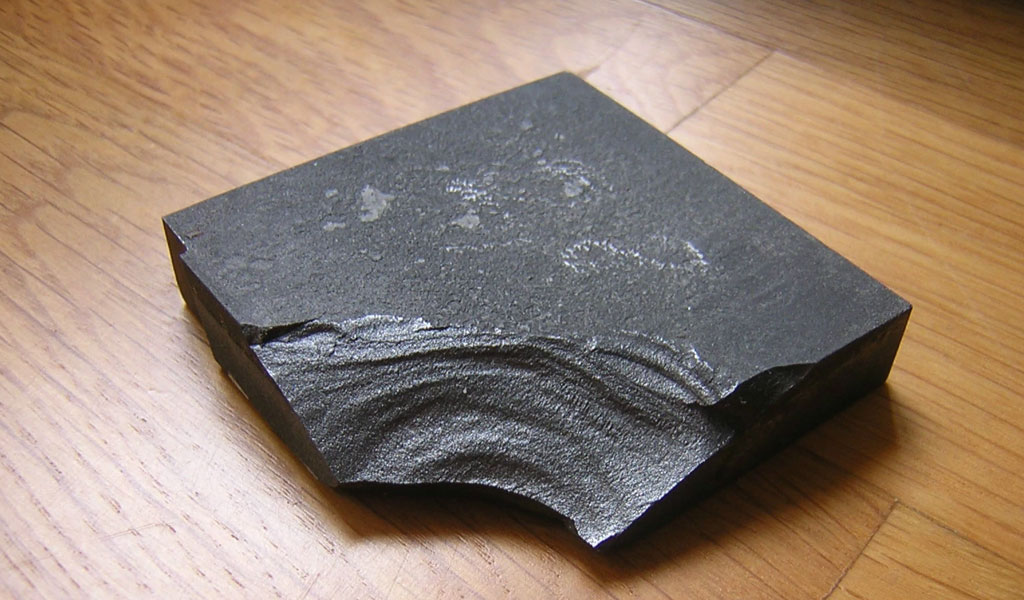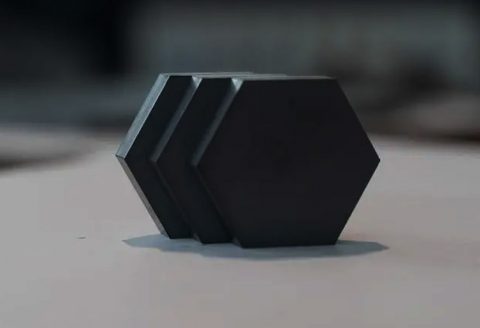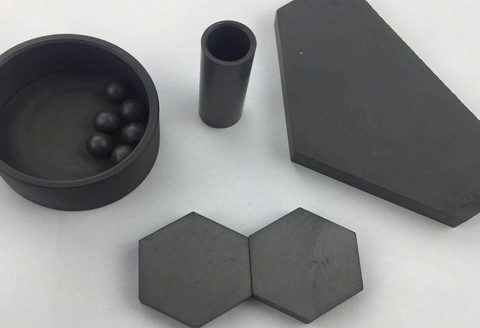Boron Carbide Ceramic

What Is Boroncarbide
Boron carbide, also known as black diamond, is an inorganic substance with the chemical formula B₄C, usually a gray-black micropowder. It is one of the three hardest known materials (after diamond and cubic boron nitride) and is used in tank armor, body armor and many industrial applications. It has a Mohs hardness of about 9.5.It was discovered in the 19th century as a by-product of metal boride research and was not studied scientifically until the 1930s. Boron carbide can be obtained by reducing boron trioxide with carbon in an electric furnace.Boron carbide can absorb a large number of neutrons without forming any radioisotopes, so it is an ideal neutron absorber in nuclear power plants, and neutron absorbers mainly control the rate of nuclear fission.
Because of its low density, high strength, high temperature stability and good chemical stability. It is used in wear-resistant materials, ceramic reinforced phases, especially in lightweight armor, reactor neutron absorbers, etc. In addition, compared with diamond and cubic boron nitride, boron carbide is easy to manufacture and low in cost, so it is more widely used. It can replace expensive diamond in some places and is commonly used in grinding, grinding, drilling and other applications.
Boron Carbide Ceramic Machining Services – Precision CNC Machined Boron Carbide Ceramic Parts Manufacturer
Pintejin is experienced in machining boron carbide material and manufacturing quality boron carbide ceramic parts, our ceramic CNC machining services will deliver the best parts with lower cost and shorter lead time. With our state-of-the-art CNC machines and equipment, we can work with different grades of ceramic and machine intricate, precise turning, drilling, and milling parts. We have 3-axis/4-axis/5-axis machining capabilities for your various purposes and needs of boron carbide ceramic machined parts, enabling us to handle complex CNC machining boron carbide ceramic components while maintaining high precision, premium accuracy, flexibility, and consistency. We can also offer CNC milling and CNC turning for other kinds of demands in boron carbide ceramic parts production. If are considering using boron carbide ceramic material to make your required CNC products, welcome to request an online quest or contact us to talk about more details, we’ll make our best to assist you to complete the project.
Our Case Studies of Boron Carbide Ceramic Machining Parts
The Properties And Applications Of Boron Carbide Ceramic
A notable feature of boron carbide ceramics is that it is very hard, its microhardness is about 50000MPa (ie 50GPa), second only to diamond (90~100GPa) and CBN (80~90GPa), and its grinding efficiency can reach 60% of diamond ~ 70%, which is 1 times that of SiC and 1~2 times that of corundum grinding ability. It has good acid and alkali resistance, and has a small thermal expansion coefficient (4.5x 10-6℃), so it has good thermal stability. Absorbs thermal neutrons, but has poor impact resistance and high brittleness.
Boron carbide is resistant to air corrosion at 1000°C, but it is easily oxidized in an oxidizing atmosphere at higher temperatures. Boron carbide has high resistance to acid and alkali, and is not wetted by most molten metals, and has relatively high stability in contact with these substances.
Boron carbide powder can be directly used to grind precious stones, bearings, etc. Using the characteristics of high hardness of boron carbide ceramics, it can be used as abrasives, cutting tools, wear-resistant parts nozzles, bearings, axles, etc. Taking advantage of its good thermal conductivity, low thermal expansion coefficient and ability to absorb thermal neutrons, it can be used to manufacture high-temperature heat exchangers and control agents for nuclear reactors. Taking advantage of its good acid and alkali resistance, it can be used to make chemical utensils, molten metal crucibles, etc.
It does not react with acid and alkali solutions, and has high chemical potential, neutron absorption, wear resistance and semiconductor conductivity. It is one of the most stable substances to acids and is stable in all concentrated or dilute acid or alkali aqueous solutions. Boron carbide is basically stable below 800 ℃ in the air environment, because the boron oxide formed by its oxidation at a higher temperature is lost in the gas phase, resulting in its instability, and it is oxidized to form carbon dioxide and boron trioxide.
There is special stability when some transition metals and their carbides coexist. Under the condition of 1000~1100℃, the transition metals of groups IV, V and VI in the periodic table react strongly with boron carbide powder to form metal borides. However, at higher reaction temperatures, literature reports indicate that boron carbide is easily nitrided or reacted with transition metal oxides to form corresponding boron nitrides and borides, which are rare earth and alkaline earth metal hexaborides. many.
When sodium hydroxide, potassium hydroxide, sodium carbonate, and potassium carbonate are melted, boron carbide is easily decomposed, and the boron content is measured.
It has a Mohs hardness of about 9.5, the third hardest known substance after diamond and cubic boron nitride, and is higher than silicon carbide.
Due to the factors of preparation methods, boron carbide is prone to form carbon defects, resulting in the change of the boron to carbon ratio in a wide range without affecting its crystal structure, which often leads to the reduction of its physical and chemical properties. Such defects are often difficult to resolve by powder diffraction and often require chemical titration and energy loss spectroscopy to determine.
It should be noted that, in addition to B4C, boron carbide materials may have different stoichiometric ratios, and the currently known stoichiometric ratio of B:C is 4~10.5.
The Manufacturing Process Of Boron Carbide Ceramic
Preparation Of B4C Powder
The preparation method of B4C powder can refer to the preparation method of SiC powder. For the preparation method of reducing boron anhydride with carbon, the reaction formula is as follows:
2B2O3+ 7C⇋B4C+6CO
This method is to indirectly heat the ingredients or directly pass the current through the ingredients in resistance furnaces and electric arc furnaces. When the temperature reaches 2200 ° C, B4C is decomposed into carbon-rich and boron, and boron will volatilize at high temperatures. The obtained B4C contains a large amount of free graphite, and its content reaches 20% to 30%. The B4C prepared in the resistance furnace contains a small amount of free carbon, but contains free boron, with a content of 1% to 2%.
Magnesium thermal reduction of boron anhydride in the presence of carbon produces very fine boron carbide powder in which magnesium oxide is washed away with acid. In this boron carbide, magnesium as well as free boron may be the main impurities. Due to the low temperature in the process, the free boron content is slightly higher than that of boron carbide prepared by reducing boronic anhydride with carbon in a resistance furnace.
Forming And Firing
Boron carbide ceramics can be formed by various methods. In order to obtain dense B4C, it is generally prepared by hot pressing and sintering. The hot-pressed sintered B4C can reach 98% of the theoretical density. The preparation is carried out in a vacuum hot-pressing furnace or an ordinary hot-pressing furnace. The hot-pressing temperature is 2100°C, the pressure is 80~100MPa, and the temperature is kept for several minutes. The pressure needs to be maintained during cooling. . Due to the poor thermal shock resistance of B4C, the cooling should be slow. The hot pressing temperature should not be too high, the B4C-C eutectic liquid phase will appear at 2150 °C, but if the temperature is too low, the product density will be low. Using B4C ultrafine powder raw material, boron carbide ceramic products with high density and hardness can be obtained.

